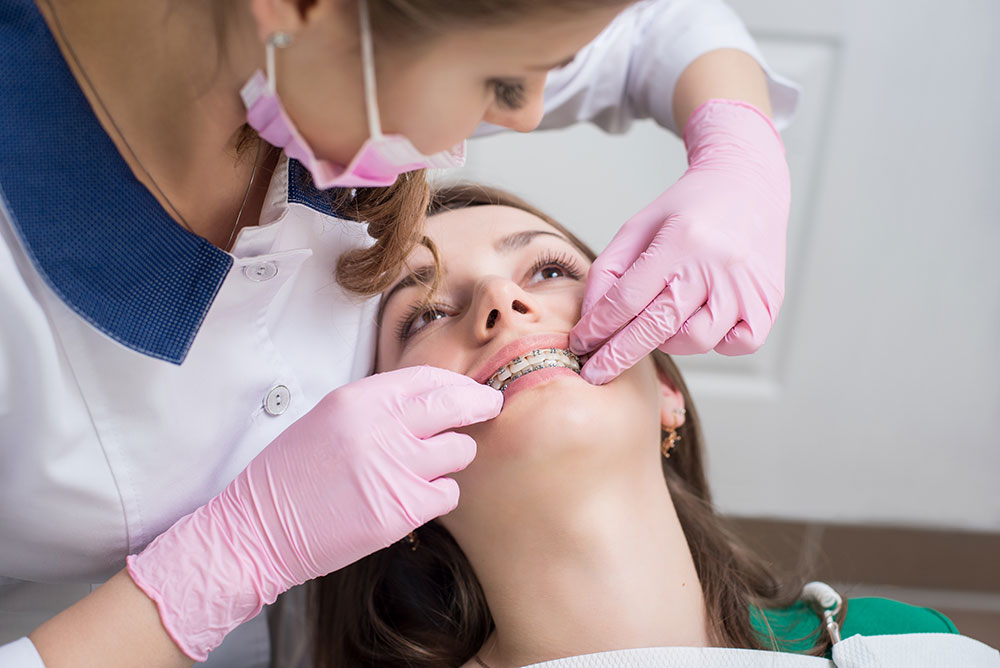All about Legacy Orthodontics
Table of ContentsRumored Buzz on Legacy Orthodontics9 Easy Facts About Legacy Orthodontics Described7 Simple Techniques For Legacy OrthodonticsWhat Does Legacy Orthodontics Mean?Legacy Orthodontics for Dummies
At Advanced Orthodontics, we offer patients with a alternative treatment experience. Furthermore, we provide adjustable treatment schedules, versatile payment alternatives and an enjoyable, delightful experience. braces. Phone call ( 480) 357-4900 today to find out more and schedule an appointment.An orthodontist is a dentist trained to detect, prevent, and deal with teeth and jaw irregularities. Orthodontists function with people of all ages, from youngsters to grownups.
Malocclusion, or misaligned teeth, can result in dental problems, consisting of tooth decay, gum disease, and challenging or excruciating chewing. But not everybody is born with straight teeth. If you have a bad bite or big areas between your teeth, you may intend to speak with a dental practitioner specializing in orthodontic care.
The Of Legacy Orthodontics
( Photo Credit: DigitalVision/Getty Images) Orthodontists make use of fixed and removable dental devices, like dental braces, retainers, and bands, to transform the setting of teeth in your mouth. Orthodontic therapy is for oral abnormalities, including: Uneven teethBite problems, like an overbite or an underbiteCrowded teeth or teeth that are too far apartJaw misalignmentThe goal of orthodontic therapy is to enhance your bite.
A healthy and balanced bite ensures you can consume, chew, and talk effectively. While you could believe of orthodontists as primarily for children or teens who need braces, they can deal with dental problems at any age. Orthodontists participate in college, oral institution, and orthodontic school. After graduation, they spend 2 or 3 years in an orthodontic residency program.
All orthodontists are dentists, but not all dental practitioners are orthodontists. Orthodontic residency programs offer intensive, concentrated instruction for dental professionals. They concentrate on two locations: Exactly how to appropriately and securely move teeth Just how to correctly assist growth in the teeth, jaw, and faceOnce an orthodontist has completed training, they have the option to come to be board licensed.
Indicators on Legacy Orthodontics You Need To Know
Imbalance, or malocclusion, is one of the most common factor individuals see an orthodontist. It is genetic and is the outcome of size distinctions in between the top and lower jaw or between the jaw and teeth. Malocclusion results in tooth congestion, an askew jaw, or irregular bite patterns. Malocclusion is usually treated with: Your orthodontist affixes steel, ceramic, or plastic square bonds to your teeth.
If you have just minor malocclusion, you may be able to utilize clear dental braces, called aligners, rather than conventional dental braces (https://www.reverbnation.com/legacyorthodontics). Some individuals require a headwear to assist relocate teeth right into line with pressure from outside the mouth. After braces or aligners, you'll require to use a retainer. A retainer is a personalized device that maintains your teeth in area.
They're most frequently used on kids. They can develop additional room in the mouth without having to pull teeth. If you have a significant underbite or overbite, you could require orthognathic surgical procedure (also called orthodontic surgery) to extend or shorten your jaw. Orthodontists use cables, medical screws, or plates to sustain your jaw bone.
You might require to see an orthodontist if you have: Crowding or not adequate room for all of your teethOverbite, when your upper teeth come by your bottom teethUnderbite, when your base teeth are as well much forwardSpacing or issues with gapsCrossbite, which is when your upper teeth fit behind your base teeth when your mouth is closedOpen bite or an upright void in between your front base and top teethMisplaced midline, when the facility of your bottom and upper teeth do not line up Fixing a dental malocclusion can: Make attacking, chewing, and talking easierImprove the proportion of our face and your general appearanceEase pain from temporomandibular joint conditionsDifferent your teeth and make them easier to cleanse, helping prevent dental caries or dental caries It's frequently a dentist who first notices misaligned teeth throughout a regular test.
8 Easy Facts About Legacy Orthodontics Explained

Throughout your first orthodontic consultation, you'll likely have: An oral examPhotos taken of your face and smileDental X-raysPanoramic (360 level) X-rays of your face and headImpressions to develop molds of your teethThese tests will certainly aid your orthodontist understand exactly how to continue with your therapy. invisalign. An orthodontist is a dentist that's had training to treat your teeth and jaw
Orthodontists may carry out surgical procedure, exams,X-rays,and even more to aid you achieve a more comfortable, much healthier smile. An orthodontist is focused on your bite, so something like a cracked tooth would be taken care of by a dental practitioner. Orthodontists are dental practitioners but not all dental professionals are orthodontists. Orthodontists are focused on your bite, or the way your teeth fit together, and the straightness of your teeth.
Ever questioned how stars always appear to have flawlessly straightened teeth? The answer frequently depends on the skilled hands of an orthodontist. Yet just what does an orthodontist do? click this site Orthodontists are dental experts that concentrate on fixing irregularities in the teeth and jaws. Their expertise surpasses simply developing a gorgeous smile; it encompasses boosting your general dental wellness and function.
Legacy Orthodontics Fundamentals Explained

While braces are the most commonly recognized orthodontic treatment, orthodontists have a varied toolkit at their disposal. The certain technique picked depends upon the intensity of the situation, the individual's age, and private preferences. These reliable braces utilize a system of braces bonded to the teeth and attached by cords.
Clear aligners, like Invisalign, are a preferred choice for clients looking for a more discreet therapy choice. These removable trays are customized to progressively shift the teeth's placement. Headwear may be made use of combined with braces or aligners to use extra targeted forces, specifically for remedying jaw disparities. In situations of slim jaws, palatal expanders can be made use of to create area for proper tooth placement.